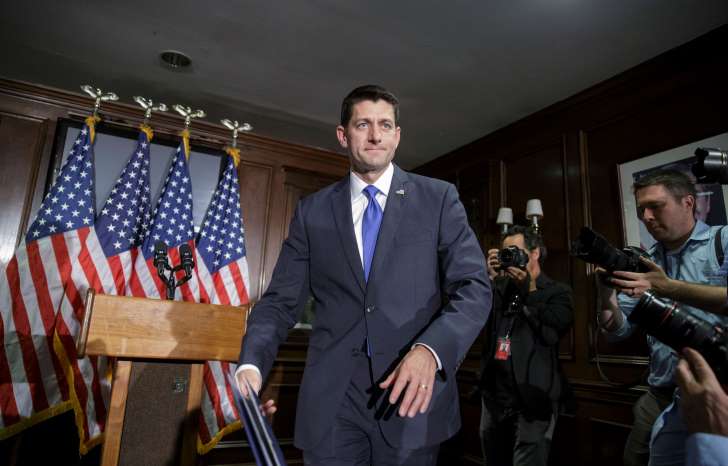January 3, 2016
On September 27, 2015, in San Jose in California at the India-US Startup Konnect, Prime Minister Narendra Modi had said, “The mega corporations of today were start-ups of yesterday.” This was briefly one-and-half months after he challenged the start-up community, at a Nasscom event, to build new-generation companies like Facebook and Google out of India.

January 3, 2016
On September 27, 2015, in San Jose in California at the India-US Startup Konnect, Prime Minister Narendra Modi had said, “The mega corporations of today were start-ups of yesterday.” This was briefly one-and-half months after he challenged the start-up community, at a Nasscom event, to build new-generation companies like Facebook and Google out of India.

To boost entrepreneurship and make it easy for individuals to start companies, Modi will announce on January 16 a detailed blueprint of “Startup India, Stand up India”.
He has all the reasons to do so. Over the past two years, India has emerged as the third largest startup ecosystem after the US and the UK, displacing Israel (on which the book Start-up Nation (Dan Senor, 2011) was written and China (which has an e-commerce giant like Alibaba competing with Amazon). India too has its fair share of successful startups, like Flipkart, Snapdeal and InMobi, valued at more than a billion dollars. But this ecosystem has got little help from the previous governments.
Modi has a long tail of problems to solve — starting with fund raising, better regulations and skill development that will lead to innovations that help change society and lifestyle. The start-up community in India is hoping that the initiative solves some of these problems.
Funding is the fuel for start-ups, and has been a big roadblock for Indian start-ups. In 2015, however, Rs 29,400 crore was raised, but was done so mostly by established companies such as Flipkart, Snapdeal, Ola Cabs and Paytm. “Funds are growing, but not so much than that in the international markets. The number of accelerators, domestic angels and incubators are very low,” says Rajat Tandon, head of the Es 10,000 Startups’ initiative at Nasscom. Angels are the ones who fund early stage start-ups.

The government has announced funds like the Bharat Fund, but the corpus is just Rs 900 crore. Then there is the India Aspiration Fund of Rs 2,000 crore. An average angel or first round of funding required for any start-up is Rs 16-18 crore. There are other funds that the government has set up for small and medium business like the MUDRA fund. But there’s nothing for startups specifically.
Modi said at the India-US Startup Konnect, “Start-ups defy the natural rates of growth. An idea can become a global name within a year. Customers can multiply at the rate of millions; employ thousands and valuation are in billions.” However, entrepreneurs feel that the current ecosystem in India does not allow growth. Thanks to the policies and clearances required, it takes an average of 29 days to start a business in India, versus six days in US and three days in Singapore.
If international investment needs to be attracted, new rules have to be brought in. “Investors need scale businesses and they need an exit… India’s capital market is significantly restricted,” says Vijay Shekhar Sharma, founder of Paytm, valued at Rs 21,000 crore.
The government has left very little options for start-ups that might not make it. If they make losses, they cannot list on the stock exchanges in India. Nor do banks provide them with any debt money. Not being listed also means that it can’t issue convertible bonds (which can be converted into shares in the issuing company), as Uber did in the US to raise funds. Most of the successful start-ups internationally have been running losses for many years to build businesses of scale, but have still been able to raise money from the open market.
Sharma explains that as in the case of Singapore and the US, the government should also match the funds put in by a private investor. “You need Rs 300-500 crore to build large companies of scale. But today, that money is coming only from the private sectors… We don’t see that changing anytime soon,” Greg Moran, co-founder and CEO of ZoomCar, which is in the self-drive car business.
Others like Saurabh Srivastava, chairman of India Angel Network, which helps funding and incubating start-ups think otherwise. Until the dotcom bubble happened in 2000, start-ups had not seen venture capital (VC) money flowing in. “There were no VCs, no angel investors, and banks were not lending to startups. But after a few successful models, people started investing,” he says. Some of the notable start-ups of the Dotcom days are EnfoEdge that runs Naukri.com, and MakeMyTrip. A decade later, we have billion dollar unicorns like Flipkart, Snapdeal, InMobi and Paytm.
Apart from a few IT and BPO start-ups that became big in the 1990s and 2000s, the lack of Internet penetration held back growth for the rest of the entrepreneurs. In 2010, when the Internet started picking up and smartphones became mass-market, companies such as Flipkart, Snapdeal and Google India became big, and are now investing in newer start-ups.
The other problem is taxation — India is the only country where if a start-up raises money more than its fair value (which is in most cases negative because startups don’t have robust balance sheets and are mostly in loses for the first few years), it has to pay taxes against the money raised. Start-ups can’t give employee stock options, because they are taxable for the employees even before the company turns profitable. India will require more than 10 million jobs in the coming years, and only start-ups can provide that. In the US, in the past 31 years, all new jobs were created by start-ups.

Currently, technology start-ups make over 90 per cent of the ecosystem. Those in the field of agriculture, retail, biotech and pharma are still to come up. Despite the government’s push to the manufacturing sector, there are none in that sector either. Companies like Foxconn are still setting up factories; other big companies such as Micromax, Lava, Karbonn are also building manufacturing units in the country. For manufacturing start-ups to really take-off in the country, the focus has to be on small and medium businesses that are involved in the cottage industry. The newly launched Pradhan Mantri Mudra Yojana (PMMY) has given them a fresh lease of life with `50,000 crore worth of loans to 80,000 small entrepreneurs.
A majority of these comprise of businessmen from the backward classes, in tune with PM Modi’s recent statement where he estimates that the number of Dalit entrepreneurs will “double” in the next couple of years.
The government will also have to build linkages between schools, colleges, the IITs and the IIMs, to develop innovative ideas, on which any start-up ecosystem thrives, says Nasscom’s Tandon. This would require the government to focus on skill development in areas beyond technology, which hasn’t happened so far.
With the talent pool that India has, this is just the beginning. Until six years ago, Srivastava says one or two angel investments happened in a year. “Now there are 4,000 start-ups and one investment happens every ten days,” he says.
Looking West: Making entrepreneurs in America

Started in 2011, Startup America is a White House initiative to bring together the private sector and the federal government to boost entrepreneurship in the country. President Barack Obama’s vision is to create a huge number of entrepreneurs for sustainable growth and quality jobs. “Entrepreneurs in clean energy, medicine, advanced manufacturing, information technology, and other fields are the ones who will build the new industries of the 21st century, and solve some of our toughest global challenges,” the Initiative document on the White House website says.
Some of the key actionable points are:
1. Expand access to capital for high-growth start-ups throughout the country;
2. Expand entrepreneurship education and mentorship programmes that empower more Americans not just to get a job, but to create jobs;
3. Strengthen commercialization of the about $148 billion in annual federally funded research and development.
4. Identify and remove unnecessary barriers to high-growth start-ups; and
5. Expand collaborations between large companies and start-ups.
According to the Initiative, two funds of a billion dollar each were created — Impact Investment fund and Early-stage Innovation Fund. The Innovation Fund provides 1:1 match to private capital raised by early stage seed funds.
Courtesy: HT







































































































